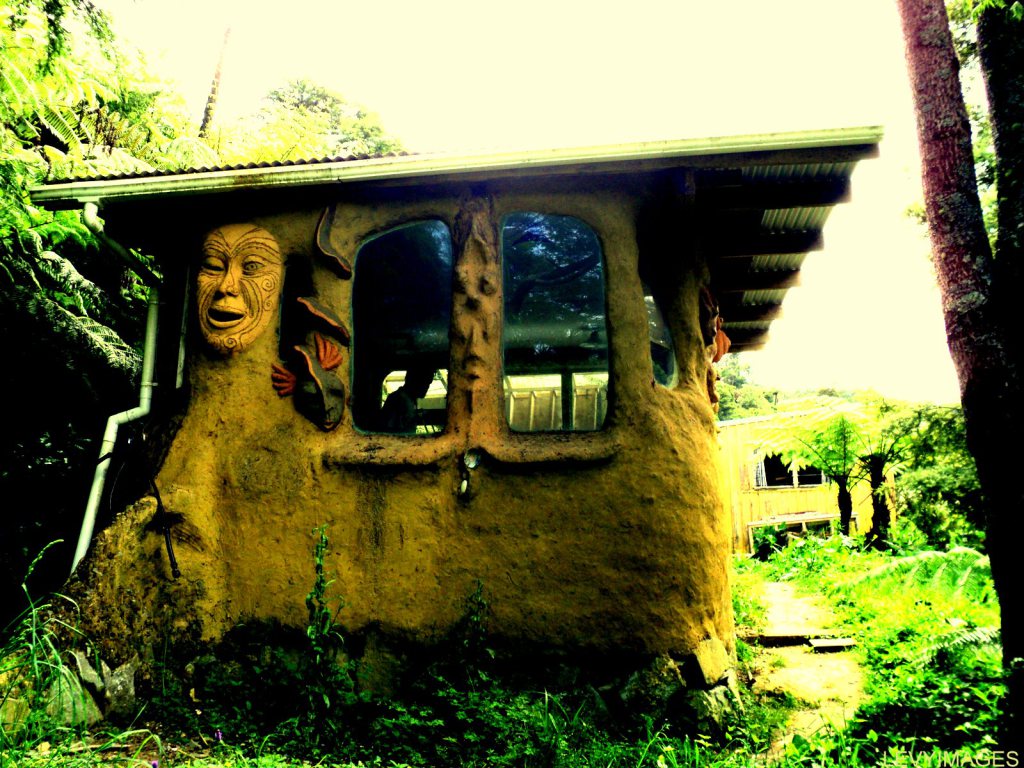CLICK HERE TO BUY YOUR OWN COPY!
This book contains everything you need to know about building your own ‘cob castles’ out of natural materials.
Cob building is the art of building homes using earth materials. Earth has been used for thousands of years as a building material, and is probably still the most common building material on Earth. The word ‘cob’ comes from an old English word that means ‘a rounded lump or mass.’ We get our word ‘gob’ from the same root word.
Cob is basically a mixture of straw, sand and clay. These natural building materials are often available right on the building site, so transportation costs for materials are greatly reduced or eliminated altogether. Once the walls are built (by stacking the cob to build walls) they are covered with plaster to seal them. There are no forms, brick shapes or frames. Since cob is basically the same consistency as modeling clay, it lends itself to organic shapes that are more curved and natural. An artistically designed cob home fits in with its surroundings. These structures feel more at home and in harmony with natural landscapes. In addition to making beautiful homes, cob can also be used to build sculpture, garden walls and outdoor ovens.
Cob is literally ‘dirt cheap’ since it is made from materials readily found in nature. Many cob homes I’ve visited have been built for less than $5,000, and a few have been constructed for less than $500! Not only that, but it’s so easy a child could do it. Ever make mud pies when you were a child? Then you’ve already got most of the basic skills to build with cob!
Cob is at home in most environments. Some of the earliest structures on Earth, in the Mesopotamian region, were made of a type of cob. There are cob homes in Western Europe that have been continuously occupied for centuries. With a little regular maintenance, a cob home is extremely durable. A friend of mine once built a cob pottery studio in Gulf Breeze, Florida. It survived two hurricanes, even when the surrounding buildings were demolished.
Many cob structures in earthquake zones have demonstrated remarkable durability as well. No building system is earthquake-proof under every seismic condition, but a cob mansion in Nelson, New Zealand has survived two major earthquakes that destroyed the town around it. In South Yemen, in a fault zone, there are medieval cob houses 13 stories high. A cob building is one monolithic unit reinforced by straw, so it has no weak straight-line mortar joints, making it stronger than brick or block.
Cob is also non-toxic and recyclable. It is made from natural materials that contain no toxins. Cob doesn’t require any products that don’t come directly from the Earth. This ancient way of building also doesn’t contribute to deforestation, mining or pollution. Since it is a natural form of building, it does not rely on manufactured materials. Since it is made using materials directly from the building site, it doesn’t use fossil fuels transporting materials to the site. When properly constructed, it is highly resistant to rain and humidity even in environments such as the Pacific Northwest and the British Isles.
In fact, of the hotbeds of cob building right now in the United States is Oregon!
Due to the fact that walls in a cob home are one or two feet thick, they offer excellent thermal properties. When built with passive solar design in mind, these homes often don’t require extensive heating or cooling in temperate climates. The earthen walls capture heat from the sunlight in the daytime and radiate it at night. Such homes rarely need cooling in the summertime, and can be heated with a small wood stove in the wintertime.

